| Harry S. Truman | |
|---|---|
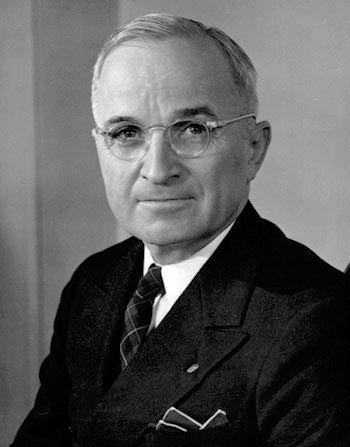 |
|
| 33rd United States President « Previous Next » |
|
| In office | Apr. 12, 1945 – Jan. 20, 1953 |
| V. President | Alben Barkley |
| Political Party | Democratic |
| Personal Info | |
| Born | May 8, 1884 |
| Died | Dec. 26, 1972 (at age 88) |
| Religion | Southern Baptist |
| Profession | Haberdasher, Farmer |
| Signature | |
| Wife | Bess Wallace |
| Children | Margaret Truman |
| U.S. Presidents 26-35 | |
| 26. Theodore Roosevelt (1901-1909) | |
| 27. William H. Taft (1909-1913) | |
| 28. Woodrow Wilson (1913-1921) | |
| 29. Warren G. Harding (1921-1923) | |
| 30. Calvin Coolidge (1923-1929) | |
| 31. Herbert Hoover (1929-1933) | |
| 32. Franklin D. Roosevelt (1933-1945) | |
| 33. Harry S. Truman (1945-1953) | |
| 34. Dwight D. Eisenhower (1953-1961) | |
| 35. John F. Kennedy (1961-1963) | |
| List of All the Presidents |
Harry S. Truman succeeded President Franklin D. Roosevelt and became the 33rd United States President when President Roosevelt died after serving three months into his fourth term. Truman was up against many challenges and he felt that everything had fallen upon him.
Genealogy and Childhood
Harry S. Truman originated from Lamar, Missouri. He was born on May 8, 1884. He was the firstbornof Martha Ellen Young and John Anderson Truman. His siblings were John Vivian and Mary Jane. He claimed that he was named after his maternal uncle, Harrison Young. The letter “S” that functions as his middle name does not stand for anything. Accordingly, this was chosen to satisfy both his grandfathers, whose names start with an “S”. Their names are Solomon and Anderson Shipp.
Truman’s father used to be a farmer and a livestock merchant. They originally lived in a farm in Lamar. Before he turned one year old, they relocated to a place in Harrisonville. After staying there for a while, they moved to Belton, until, finally in 1887, they settled to his grandfather’s place in Grandview. He first attended school when he was six at the Presbyterian Church Sunday School. It was only when he turned eight that he started traditional schooling.
As he was growing up, his interests focused on history and music, as well as reading. In 1901, Truman graduated in Highschool from Independence Highschool. He dreamed of entering West point to finish a college degree. However, he was not allowed to do so due to poor eyesight. When it became apparent that his childhood dream of entering West Point would not be fulfilled, he enrolled in a local business school. For some reason, he only stayed for one semester. He was then hired as a time keeper at a railroad in Santa Fe. During this time, he was subjected to sleep in traveller camps near the railroads. He had a succession of clerical jobs, getting hired briefly from one job to another. He returned home to work for his grandfather at their Grandview farm until he re-joined the army 1917.
Truman in the Army
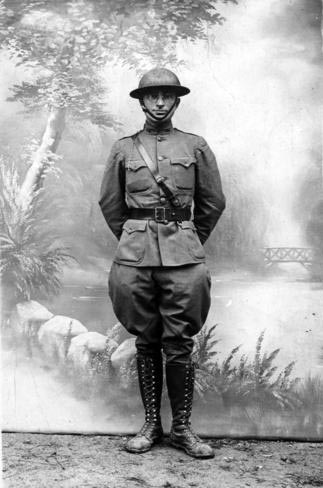 Truman became a registered Missouri Army National Guard in 1905. His service lasted until 1911. As the World War I started, Truman went back to service. He was initially trained in Oklahoma before he was officially sent to perform his active duty in France. He was tasked to tend to the camp canteen.
Truman became a registered Missouri Army National Guard in 1905. His service lasted until 1911. As the World War I started, Truman went back to service. He was initially trained in Oklahoma before he was officially sent to perform his active duty in France. He was tasked to tend to the camp canteen.
Truman was promoted to become an officer and later on became the commander in an artillery regiment for Battery D, 129th Field Artillery, 60th Brigade, and 35th Infantry Division. Under his supervision, the battery never lost an army. Heading a field artillery recognized for being undisciplined, he made his troops one of the most united, loyal and obedient group ever organized in World War I. After the war, he rose to become a Colonel in the Army Reserves. He later on claimed that the war has greatly transformed him as it brought out the leadership potentials that he never thought he even had. As such, he claimed that his political career was an offspring of his war record and history.
After being rejected by Bess Wallace before re-joining the army, Truman returned home and again made his proposal to marry her. They were married on the 28th of June, 1919 and later had a daughter which they named Mary Margaret.
Before his marriage, Truman and a friend he met in the army started a haberdashery in Downtown, Kansas City. After a few years of success, the economic crisis in 1921 made him file for bankruptcy. It was only after 1934 that Truman was finally able to pay off all his debts.
Political Career
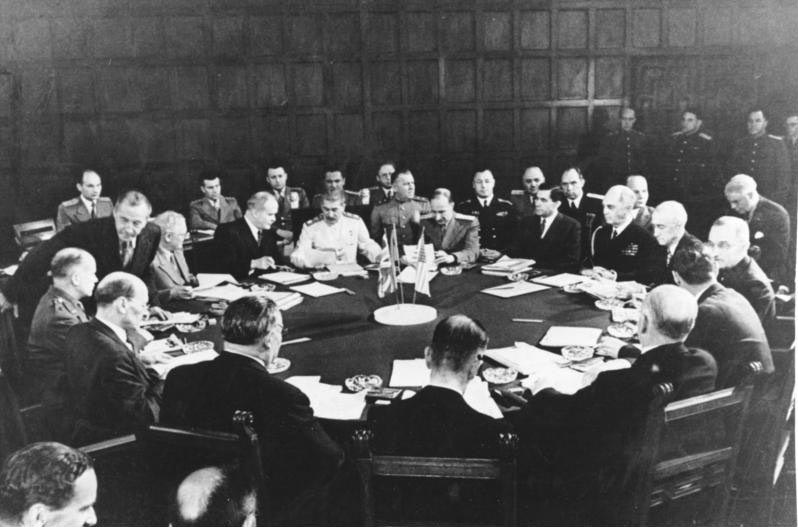 He was made judge of the Country Court of the eastern district of Jackson County in 1922. This position entailed administrative rather than judicial function. He was not re-elected by 1924. In 1926 he was, however, elected as the presiding judge for the court and was re-elected again after his first term ended. The year 1930 marked a milestone to the Kansas City history as Truman managed a Ten Year Plan which eventually transformed the City into a booming economy. The Plan made possible the development of extensive road improvement, construction of a new County Court building, and the creation of the 12 Madonna of the Trail monuments that were made to honor women.
He was made judge of the Country Court of the eastern district of Jackson County in 1922. This position entailed administrative rather than judicial function. He was not re-elected by 1924. In 1926 he was, however, elected as the presiding judge for the court and was re-elected again after his first term ended. The year 1930 marked a milestone to the Kansas City history as Truman managed a Ten Year Plan which eventually transformed the City into a booming economy. The Plan made possible the development of extensive road improvement, construction of a new County Court building, and the creation of the 12 Madonna of the Trail monuments that were made to honor women.
US Senate: First term
Truman officially entered the world of politics in 1934 as he became a candidate for the US Senate election. He ran as a representative of the Democratic Party. He later on defeated the Republican Roscoe C. Patterson. During his first term, he became very outspoken, fighting against corporate greed as the major player that influences the national affairs.
US Senate: Second Term
During his re-election in 1940, Truman defeated the Republican Manvel H. Davis with a very slight margin. Truman’s later success in politics was initially sealed when he became the Grand Master of the Missouri Grand Lodge of Freemasonry in September 1940.
Truman Committee
The Truman Committee was formed as it aimed to fight waste and mismanagement during the war. Although it initially gathered criticism and disapproval from many different sector of the government, the committee is reported to have saved more than fifteen billion dollars and countless lives. Through this initiative, he gained popularity and a lot of approvals as his advocacy coined him as the man who has saved a lot of war resources through common sense. In 1945 and later on 1948, he was named as the Man of the Year by the Times Magazine. The success of the Truman Committee became the major contributor for him to get the focus of the national spotlight.
Vice-Presidency
After being played on by the president’s advisers and President Roosevelt himself, Truman agreed to run as Vice president even against his better judgement. Their tandem was greatly accepted as it led them to victory when they defeated Governor Thomas E. Dewey and Governor John Bricker by a landslide. Truman was then sworn in to office as the new vice president on January 20, 1945. He assumed that position for only a period of three months.
US President: First Term (1945-1948)
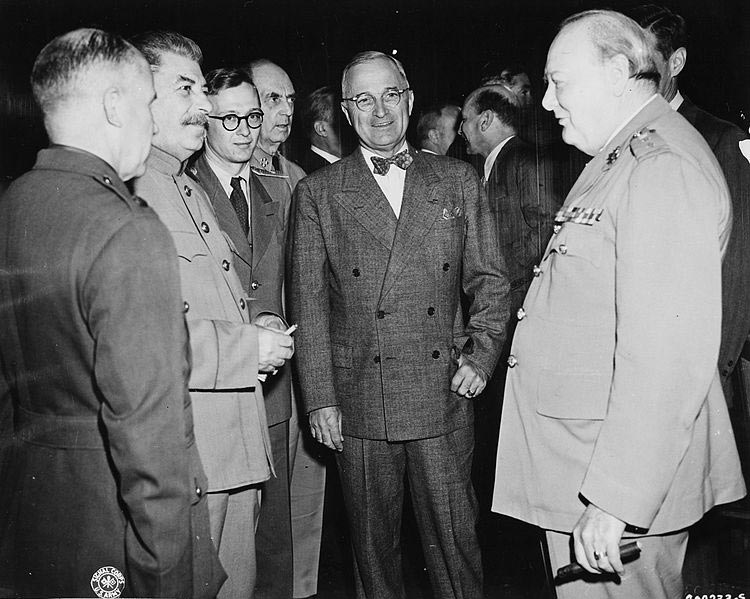 His post as vice-president was cut short following the sudden death of President Roosevelt. Upon assuming the presidential post, he was briefed by the former president’s advisers on the administration’s plans and current engagements. This briefing familiarized him about President Roosevelt’s major initiatives pertaining to the on-going war. These initiatives include the launching of the first Atomic Bomb as the US’ primary weapon against Japan. The bombing of Japan would later on become known as the Hiroshima and Nagasaki bombings. These bombings would become one of the largest factors for the US to finally conclude the war in her favour. Although the bombings gathered a lot of disapproval from many sectors of the society, Truman and his supporters held on to their argument that the decision would save the country and the lives of many Americans.
His post as vice-president was cut short following the sudden death of President Roosevelt. Upon assuming the presidential post, he was briefed by the former president’s advisers on the administration’s plans and current engagements. This briefing familiarized him about President Roosevelt’s major initiatives pertaining to the on-going war. These initiatives include the launching of the first Atomic Bomb as the US’ primary weapon against Japan. The bombing of Japan would later on become known as the Hiroshima and Nagasaki bombings. These bombings would become one of the largest factors for the US to finally conclude the war in her favour. Although the bombings gathered a lot of disapproval from many sectors of the society, Truman and his supporters held on to their argument that the decision would save the country and the lives of many Americans.
His first term as president has been very challenging as he was made to face a lot of strikes and upheavals brought about by the transition initiated by the end of the war. All aspects of the government and the society needed renewal and rehabilitation as the nation shifted from war to peacetime economy. Since the people are hyped by the war’s closure, everyone’s momentum is high and no one is patient enough to wait until everything is in order. As such, major strikes and protests were performed with great passion and conviction.
His handling of the Cold War and the Fair deal and even his efforts to recognize the establishment of the State of Israel made him an unfavorable candidate for a re-election. A lot of critics found him too incompetent to handle affairs that greatly involved humanitarianism and democracy.
Truman was re-elected in the election that transpired in 1948. From a public approval rating of 36%, his victory was founded by a lot of people very intriguing. Accordingly, his success can be attributed to the efforts they have made during the last part of the campaign period. Truman and his staff travelled across the country as Truman made his personal appeal to voters all around the United States. Known as the “whistle stop” tactic, he personally met people to give them brief speeches from any place they find convenient. This strategy has proven to be effective as he was able to win the race coming from a very low start against Eisenhower Dewey. His second term began on January 20, 1949 with Alben Barkley as his vice president.
US President: Second term (1949–1953)
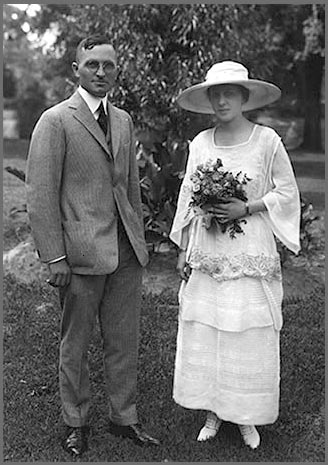 His second term is not far-fetched from the challenges that he faced during his first terms. Bombarded by foreign and local affairs, he remained true to his Democratic beliefs. It was during his second term that the Chinese conflicts and the Korean War emerged. During this time, he received a lot of negative reactions on how he handled international affairs. He has created a lot of unpopular decision that led Congress to become hostile and unreceptive to him and his governance. One of his decisions that generate a lot of upheaval was the dismissal of General Douglas Mc Arthur. This decision has created a lot of negative reaction that steered his national approval to the lowest.
His second term is not far-fetched from the challenges that he faced during his first terms. Bombarded by foreign and local affairs, he remained true to his Democratic beliefs. It was during his second term that the Chinese conflicts and the Korean War emerged. During this time, he received a lot of negative reactions on how he handled international affairs. He has created a lot of unpopular decision that led Congress to become hostile and unreceptive to him and his governance. One of his decisions that generate a lot of upheaval was the dismissal of General Douglas Mc Arthur. This decision has created a lot of negative reaction that steered his national approval to the lowest.
His second term as president staged many war disappointments and government scandals including controversies concerning corruption charges among Senior Officials.
Attempted Assassination and Death
Puerto Ricans Griselo Torresola and Oscar Collazo made their attempt to assassinate Truman at Blair house on November 1, 1950.
Harry Truman’s political career was put to a stop after a bill was passed that no longer allowed presidents to run for a third term. After stepping down as a US president, he returned home to Independence, Missouri to live at the Wallace Home. His predecessor was Franklin D. Roosevelt.
After running the country, Truman found himself close to poverty. He was able to manage his finance by writing his memoirs.
On December 5, 1972 he was admitted and confined to Kansas City Research Hospital and Medical Center. Findings showed that he had lung congestion due to pneumonia. He died on December 26, 1972 at the age of 88. He is buried at the Truman Library in Independence, Missouri. Following his wife’s request, he was given a simple private funeral service at the library as opposed to a state funeral being given to a person who held the highest position in the country.
Harry Truman left his office as one of the most unpopular president in history. However, years after his term ended, his popularity started to climb steadily. After he died, he was considered among the “near great” presidents by a poll gathered from distinguished historians.